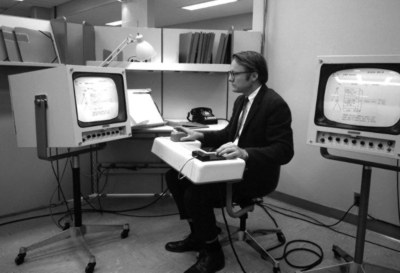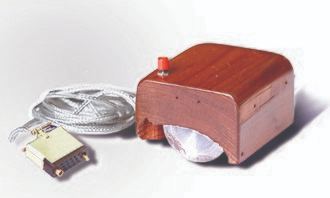| Bill English - The Master Behind The Mouse |
| Written by Sue Gee | |||
| Monday, 03 August 2020 | |||
|
Bill English, the computer engineer who built the very first prototype mouse, was the behind-the-scenes mastermind of the "Mother of All Demos" and later assisted Alan Kay in building the Xerox Parc Alto computer, has died at the age of 91. William English testing the first computer mouse, which was unveiled in 1968 at the "Mother of All Demos" I have to admit that I'd never come across the name William (Bill) English despite the fact we reported on the 50th anniversary of the event now known as "The Mother of All Demos". It was Douglas Englebart who was presenter of the 90-minute talk on “A Research Center for Augmenting Human Intellect" to the live audience at the 1968 Fall Joint Computer Conference held in San Francisco. It was remarkable both for the content and the method of delivery. This first use of what we would now call video conferencing introduced the many aspects of interactive computing, including the mouse and hyperlinking in which clicking a word in a document transported the user to an entirely new document. These ideas were visionary in 1968 and must have stunned many in the audience and we tend to attribute both the ideas and their implementation to Englebart. This however isn't the case and it was Bill English, a colleague at Stanford Research Institute (SRI) headquartered at Menlo Park, who is should be credited for the "Mother of All Demos", and indeed was so credited at the time: If you watch the end of the video with captions on, you discover how easy it is to miss the fact that Bill English was the person who made that event happen. At the very end of the presentation the view switches to Menlo Park where we see the technical crew whom Doug Englebart is describing as the support team for the event. It switches back to a view of Englebart and text and yes you can indeed read "Bill English" while Englebart is saying: "I particularly want to give appreciation of Bill English who not only designed all of the hardware ... been responsible for the hardware and software development but in the last few months has put together the considerable system of intercoms and video switching and controls and mixers, begged borrowed and stolen, that would provide this show and make it come together like this" In the captions, however, in place of "Bill English" there is obvious goobledegook reading "buildings base". According to Wikipedia it was English who figured out how to connect a terminal in the San Francisco Civic Auditorium to the host computer at SRI 30 miles (48 km) away, and who also transmitted audio and video between the locations. The first prototype of a computer mouse, as designed by Bill English from Douglas Engelbart's sketches Five yeas before this presentation, in 1963, it was Bill English who built the initial prototype of the mouse, based on Englebart's notes and English who was the first user of the device. He then went on to lead a project sponsored by NASA which evaluated the best way to select a point on a computer display in which the mouse mouse was chosen as the winner. English left SRI in 1971 and went to Xerox PARC, where he managed the Office Systems Research Group, now regarded as the incubator of many elements of modern computing in the contemporary office work place,:where he developed a ball mouse. He also acted as a mentor for Alay Kay, in particular helping him, not only with the concept of a research budget, but also with the draft a detailed plan for a device that would produce text and graphics on a display screen. This led to the award of a budget of $230,000 and the concept morphed into PARC's Alto, the world's first personal computer. Bill English at the console of SRI's system in October 1968, three months before he masterminded the "Mother of All Demos." Image credit: John English More InformationColumn: Bill English, wizard behind the scenes of seminal computer technologies, dies at 91 Related ArticlesDoug Engelbart's Mother of All Demos 50 years On Douglas Engelbart - The Man Who Invented The Future Doug Engelbart and the mouse (video) Douglas Engelbart, Inventor Of The Mouse, Dies To be informed about new articles on I Programmer, sign up for our weekly newsletter, subscribe to the RSS feed and follow us on Twitter, Facebook or Linkedin.
Comments
or email your comment to: comments@i-programmer.info |
|||
| Last Updated ( Thursday, 06 August 2020 ) |





